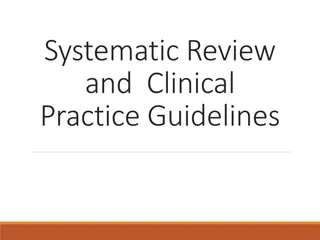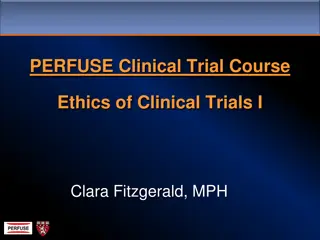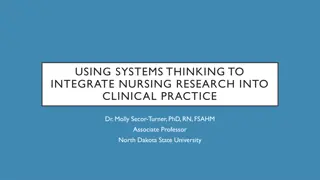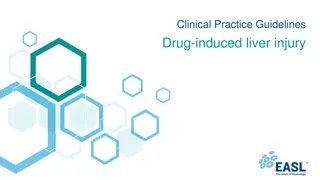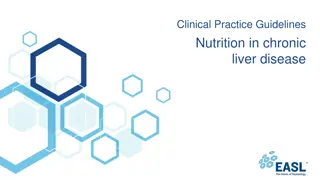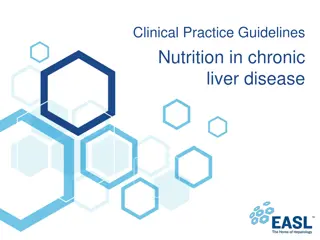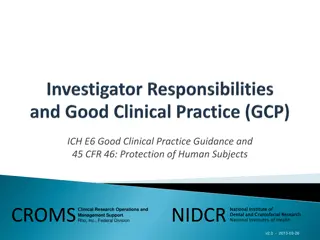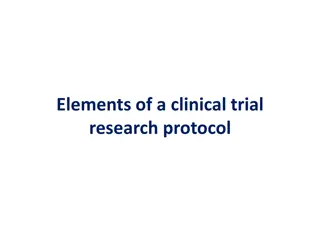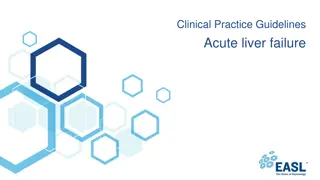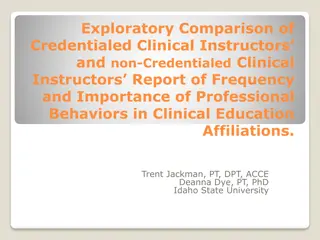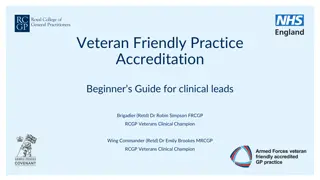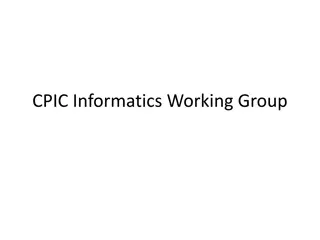Clinical Practice Guidelines for PPGL Follow-Up
Pheochromocytoma and paraganglioma (PPGL) are tumors arising from chromaffin cells. This guideline provides insights into long-term follow-up strategies post-surgery for these rare neuroendocrine tumors. Discover the prevalence of PPGL, reasons to suspect it, and implications of germline mutations. Stay informed about screening, genetic testing, and potential hereditary risk factors associated with PPGL.
Download Presentation

Please find below an Image/Link to download the presentation.
The content on the website is provided AS IS for your information and personal use only. It may not be sold, licensed, or shared on other websites without obtaining consent from the author.If you encounter any issues during the download, it is possible that the publisher has removed the file from their server.
You are allowed to download the files provided on this website for personal or commercial use, subject to the condition that they are used lawfully. All files are the property of their respective owners.
The content on the website is provided AS IS for your information and personal use only. It may not be sold, licensed, or shared on other websites without obtaining consent from the author.
E N D
Presentation Transcript
European Society of Endocrinology Clinical Practice Guideline for long-term follow-up of patients operated on for phaeochromocytoma or a paraganglioma European Journal of Endocrinology (2016) BY: R.NARIMANI 1395/2/28
Definition of pheochromocytoma and paraganglioma (PPGL) A paraganglioma is a tumor derived from extra adrenal chromaffin cells of the sympathetic paravertebral ganglia of thorax, abdomen, and pelvis or the parasympathetic ganglia located along the glossopharyngeal and vagal nerves in the neck and at the base of the skull.
A pheochromocytoma is a tumor arising from adrenomedullary chromaffin cells that commonly produces one or more catecholamines. About 80 to 85% of chromaffin-cell tumors are pheochromocytomas, whereas 15 to20%are paragangliomas. Together they will be referred to here as PPGL.
The prevalence of PPGL The prevalence of PPGL in patients with hypertension in general outpatient clinics varies between 0.2 and 0.6%. Diagnosis of PPGL may be missed during life; autopsy studies demonstrate undiagnosed tumors in 0.05 0.1% of patients. Nearly 5% of patients with incidentally discovered adrenal masses on anatomical imaging prove to have pheochromocytoma.
At least one-third of all patients with PPGLs have disease-causing germline mutations (inherited mutations present in all cells of the body). The prevalence of PPGL in individuals carrying a germline mutation in PPGL susceptibility genes may be around 50%. Patients with hereditary PPGLs typically present with multifocal disease and at a younger age than those with sporadic neoplasms.
Reasons to suspect PPGL Pheochromocytoma should be suspected in patients who have one or more of the following: Hyperadrenergic spells (e.g., self-limited episodes of nonexertional forceful palpitations, diaphoresis, headache, tremor, or pallor) Resistant hypertension A familial syndrome that predisposes to catecholaminesecreting tumors (e.g., MEN2, NF1, VHL, Carney triad) A family history of pheochromocytoma An incidentally discovered adrenal mass with imaging characteristics consistent with pheochromocytoma Pressor response during anesthesia, surgery, or angiography Onset of hypertension at a young age (<20 years) Idiopathic dilated cardiomyopathy
Biochemical Testing for Diagnosis of Pheochromocytoma and Paraganglioma We recommend that initial biochemical testing for PPGLs should include measurements of plasma free metanephrines or urinary fractionated metanephrines. The results of the past studies suggest higher specificity of the plasma than the urine test. For measurements of plasma metanephrines, we suggest drawing blood with the patient in the supine position and the patients should be fully recumbent for at least 30 minutes before sampling.
Measurement of urinary dopamine or plasma methoxytyramine (3MT) can be very useful in detecting the rare tumor with selective dopamine hypersecretion, because plasma metanephrine fractions are not direct metabolites of dopamine and may be normal in the setting of a dopamine-secreting tumor
Chromogranin A is stored and released from dense-core secretory granules of neuroendocrine cells and is increased in 80% of patients with pheochromocytoma. Chromogranin A is not specific for pheochromocytoma, and elevations may be seen with other neuroendocrine tumors
Imaging Studies We recommend that imaging studies to locate PPGLs should be initiated once there is clear biochemical evidence of a PPGL. We suggest CT rather than MRI as the first- choice imaging modality because of its excellent spatial resolution for thorax, abdomen, and pelvis.
We recommend MRI in patients with metastatic PPGLs, for detection of skull base and neck paragangliomas, in patients with surgical clips causing artifacts when using CT, in patients with an allergy to CT contrast, and in patients in whom radiation exposure should be limited (children, pregnant women, patients with known germline mutations, and those with recent excessive radiation exposure. We suggest the use of 123I-metaiodobenzylguanidine (MIBG) scintigraphy as a functional imaging modality in patients with metastatic PPGLs detected by other imaging modalities when radiotherapy using 131I-MIBG is planned and occasionally in some patients with an increased risk for metastatic disease due to large size of the primary tumor or to extra-adrenal, multifocal (except skull base and neck PPGLs), or recurrent disease.
Perioperative Medical Management We recommend that all patients with a hormonally functional PPGL should undergo preoperative blockade to prevent perioperative cardiovascular complications. -adrenergic receptor blockers are the first choice. Medical treatment should be started 7 to 14 days before operation to allow adequate time to normalize blood pressure and heart rate. Treatment should also include a high-sodium diet and fluid intake to reverse catecholamine-induced blood volume contraction preoperatively to prevent severe hypotension after tumor removal
Surgery We recommend minimally invasive adrenalectomy (eg, laparoscopic) for most adrenal pheochromocytomas We recommend open resection for large (eg, >6 cm) or invasive pheochromocytomas to ensure complete tumor resection, prevent tumor rupture, and avoid local recurrence. partial adrenalectomy is used for selected patients, such as those with hereditary pheochromocytoma, with small tumors who have already undergone a contralateral complete adrenalectomy to spare adrenal cortex to prevent permanent hypocortisolism. We suggest open resection for paragangliomas, but laparoscopic resection can be performed for small, noninvasive paragangliomas in surgically favorable locations.
What happen after surgery? Malignancy in PPGL At least 10% of phaeochromocytomas and sympathetic paragangliomas are malignant, although rates of malignancy differ according to the hereditary background. Unlike for most tumours, no molecular, cellular or histological markers are available for determining whether a PPGL is malignant.
Malignancy is defined as the presence of metastasis at presentation or during follow- up, a metastasis being defined as the presence of chromaffin tissue in nonchromaffin organs. The most frequent sites for metastases are lymph nodes, the skeleton, liver and lungs
New events in PPGL Following resection of the primary tumour, patients with PPGL are at risk of tumour persistence and of new tumoural events. Tumour persistence is the consequence of incomplete tumour resection, particularly in cases of malignant primary tumour and head and neck paragangliomas, or of tumour spillage during surgery. New tumoural events are recurrences, defined as the reappearance of disease after complete tumour eradication, or new tumours
Recurrences may be local (at the site of the primary tumour) or metastatic. New tumours are phaeochromocytomas or paragangliomas that arise in the contralateral adrenal or in a previously unaffected paraganglion. Local recurrence may arise from microscopic cells of the primary tumour that escaped the therapeutic intervention and later become detectable at the original site.
However, persistence and recurrence are usually defined according to biochemical or imaging tests after the operation: if test results are positive, then the case shows persistence and if negative, recurrence
In addition to new PPGL events, PPGL patients with syndromic diseases such as von Hippel Lindau disease (VHL), multiple endocrine neoplasia type 2 (MEN2), neurofibromatosis 1 (NF1) or hereditary paragangliomas may develop non- PPGL tumours including renal cancer, medullary thyroid carcinoma or other cancers
BUT how should we follow these patients after surgery? Although there are reports of the prognostic value of various clinical, genetic, and pathological features, there are no robust prognostic indices of recurrence. The total duration of follow-up that is required remains unclear, as new events may occur decades after initial surgery. The optimal combination and sequence of biochemical and imaging tests to detect and monitor recurrences is poorly defined
The present guideline aims to contribute to improving knowledge and standardising clinical care regarding long term follow-up of patients operated on for a PPGL and to strengthen cooperation between patients and care providers. To prepare this guideline authers performed a systematic review of the literature and analysed the European Network for the Study of Adrenal Tumours (ENS@T) database.
Recurrence or new tumors after complete resection of phaeochromocytomas and paragangliomas. A systematic review and meta- analysis 2016 European Society of Endocrinology
Method: Pubmed and Embase from 1980 to 2012 were searched for studies published in English on patients with: non-metastatic phaeochromocytoma or thoraco- abdomino-pelvic paraganglioma; complete tumor resection; postoperative follow-up exceeding one month; recurrence or new tumor documented by pathology, hormonal dosages, or imaging tests.
Results: The review included 38 cohorts, published in English. There were a total of 2509 patients, 53% were female and the mean age at diagnosis was 27 53 years. In total, 14 studies involved only patients with phaeochromocytomas; in the other 23 cohorts with information on tumour location, 89% of patients had a phaeochromocytoma.
Four studies involved only patients with a syndromic disease (i.e. VHL, NF1 or MEN2); in the other 28 cohorts with phenotypic and/or genetic information, a syndromic or familial disease and/or a mutation in a gene predisposing to PPGL were documented in 27% of patients overall. The mean or median tumor size was reported in 28 studies and was between 23 and 73 mm (median 48 mm). A total of 2396 patients had undergone curative surgery.
Conclusion: Three factors were associated with an increased risk of recurrence in multivariate analysis in at least one study: 1. syndromic disease, 2. larger tumour 3. paraganglioma (vs phaeochromocytoma). None of the studies compared outcomes of follow-up with hormonal or imaging studies, or different follow-up intervals.
The pooled incidence rate of postoperative new events was: 0.95 events/100 person-years. Assuming a steady incidence over time, this converts into a 5-year incidence of 4.7%. distributed as follows: 1. New tumours 22%, 2. local recurrences 23% 3. metastatic recurrences 55%.
The incidence of new events was 0.87 events /100 person-years in studies involving both syndromic and non-syndromic diseases. The incidence of new events was 2.06 events /100 person-years in studies involving only syndromic diseases.
A younger mean age was also associated with a higher rate of new events but this association disappeared in a multivariate model including both the mean age and the percentage of genetic or syndromic disease. Other variables were not associated with the new event rate in meta-regression analyses.
ENS@T data The ENS@T cohort provided access to individual data and enabled univariate and multivariate analyses of candidate prognostic markers. The records from 701 patients who had no evidence of persistent disease at postoperative assessment after a follow-up of 6 months or more were analysed.
RESULTS: In total: 54% were women, 80% had at least one phaeochromocytoma 34% had a genetic or syndromic disease. Median age at surgery was 46 years. Median tumour size was 44 mm and the tumour was larger than 50 mm in 44% of cases.
Median follow-up was 54 months. The risk of new events in the whole population was 10% over the first 5 years of follow-up (new tumours 42%, local recurrences 13% and metastatic recurrences 45%). The incidence of new events did not decline after 5 years of follow-up, but estimates after 10 years of follow-up are imprecise due to the small numbers of patients for whom data were available.
What we understand from this meta- analysis: The overall low frequency of recurrent disease after complete resection of a PH/PG calls into question the need for lifelong follow-up after surgery for all patients. Recurrent disease remains possible even after a long and uneventful(up to 15 years after surgery in the included studies) follow-up and appears to be more frequent in patients with paragangliomas or familial disease than patients with sporadic phaechromocytoma.
The follow-up protocol may need to be tailored according to these and other patient and disease characteristics. In particular, several studies that did not meet our inclusion criteria consistently show that germline mutations, even in apparently sporadic cases, are also associated with more aggressive disease and would benefit from intensive follow up.
To inform patients and care providers in the context of low-quality evidence, the Guideline WG therefore prepared recommendations on the basis of expert consensus
RECOMMENDATION 1: Diagnosis of malignancy
Recommendation 1.1 o No single clinical, biochemical or histological feature can distinguish malignant from benign PPGL; so we recommend defining malignancy in PPGL as the presence of metastasis in lymph nodes or other distant sites. o The proposed definition of malignancy relies on overt metastatic spread: it is specific but not sensitive.
As there is no specific biochemical marker of malignancy, the presence of metastases should be documented by imaging tests or by pathological investigations. Preoperative thoraco-abdomino-pelvic CT or MRI may disclose metastases, or metastases may present as peritumoral lymph nodes or be confirmed during intra-operative exploration. functional imaging can disclose distant metastases that are not seen on CT or MR imaging or during intra-operative exploration.
Descriptions of several series have shown that: 1. malignant primary tumours are more frequently extraadrenal (paraganglioma rather than phaeochromocytoma) than apparently benign primary tumours. 2. High levels of 3MT are found in patients with malignant PPGL. 3. Primary malignant tumours and malignant recurrences are frequent in SDHB mutation carriers and may also occur in FH and MDH2 mutation carriers
Recommendation 1.2 To document the tumoural status of patients with PPGL (patients with metastatic primary tumours or at risk of new postoperative events), we suggest performing FDG PET/CT, if possible preoperatively in these three categories of high- risk patients: in patients with paragangliomas, in patients with phaeochromocytomas and elevated (i.e. above the upper limit of the reference range) levels of 3MT in plasma or urine, in patients carrying germ line mutations of the SDHB gene
There is evidence that FDG PET/CT scanning is superior to 123I-metaiodobenzylguanidine (mIBG) scintigraphy for detecting metastasis especially in patients with SDHB mutations , but the test is expensive. 123I-mIBG scintigraphy has a role in the identification of disease which can be treated with 131I-mIBG. New radiopharmaceuticals have been developed but raise issues of cost and availability that are not addressed here. The determination of 3MT improves accuracy for diagnosing malignant PPGL but is not yet widely available
RECOMMENDATION 2: Perioperative workup
Recommendation 2.1 Because: o more than one third of patients with PPGL have disease-causing germ line mutations in a PPGL susceptibility gene. o The risk of new events is about twice as high in patients with genetic or syndromic PPGL than in those with apparently sporadic disease
o the presence of mutations has implications for the patient and her/his family. o The SDHB mutation carriers are at high risk of malignant PPGL either at diagnosis or during follow-up. SO We recommend that all patients with PPGL be considered for genetic testing.
Recommendation 2.2 As said earlier, In most PPGL, chromaffin cells produce one or more catecholamines that are metabolised into MN or 3MT the initial biochemical testing for PPGLs include measurements of plasma free metanephrines or urinary fractionated metanephrines.
Measurement of urinary dopamine or plasma 3-methoxytyramine (3MT) can be very useful in detecting the rare tumor with selective dopamine hypersecretion, because plasma MN fractions are not direct metabolites of dopamin. However, abdominal PPGL with normal preoperative MN are very rare, most parasympathetic paragangliomas are found in the head or neck and do not usually produce catecholamines.
In the setting of normal preoperative MN or 3MT, the plasma concentration of chromogranin A may provide an alternative marker of functional activity. So We suggest assaying chromogranin A preoperatively in patients with normal preoperative plasma or urinary levels of MN and 3MT.


